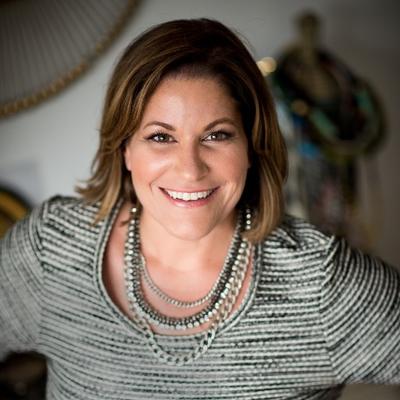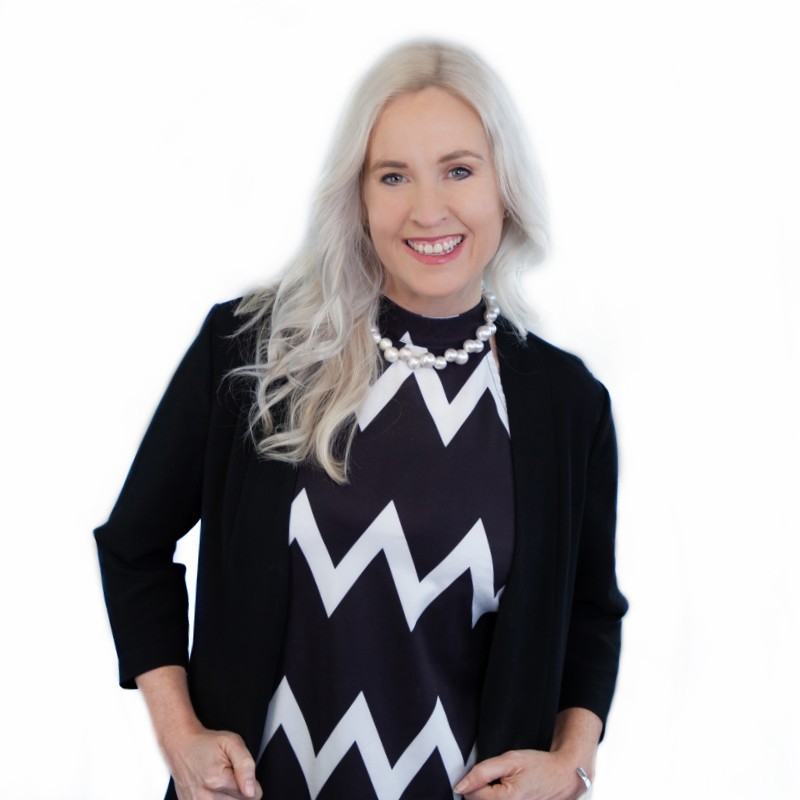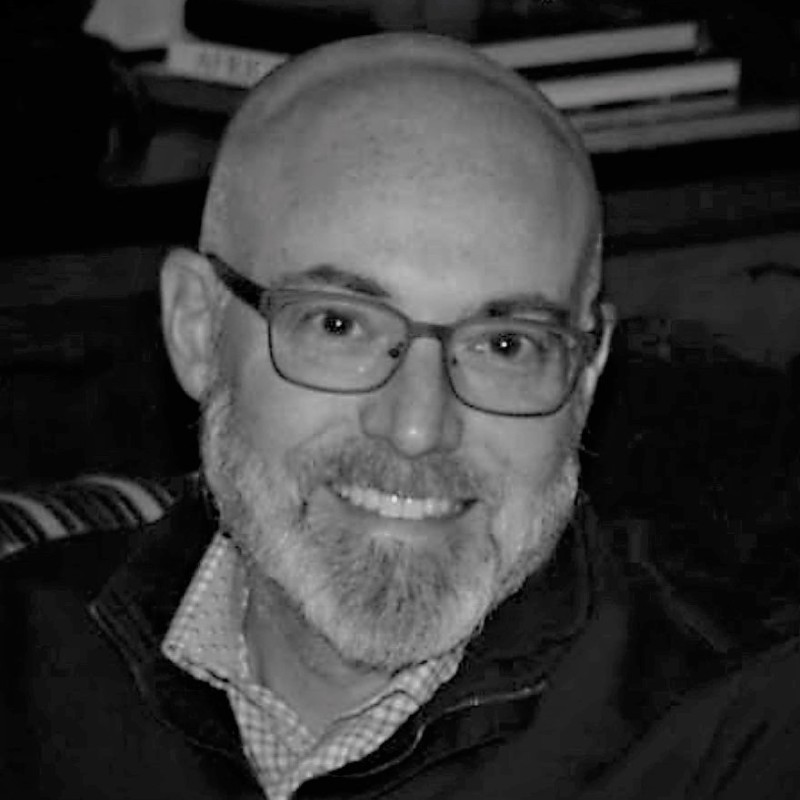The good news about gender equity? We’re talking about it. The bad news? It will take 217 years at our present pace to reach full equity.

Today, our guest is Dr. Patti Fletcher. She’s the author of the book “Disrupters” and this episode we’re calling Work Minus the Status Quo. Hi, Dr. Fletcher. How are you today?
I’m great, Neil. How are you?
Doing very good. We’re excited to have you on the show. Tell us a little bit about who you are and the book that you’ve written.
Sure. So, I grew up in enterprise technology working for SAP very early in my career after grad school and focused in on the HR line of business. So, working with the people who are responsible, not only for the infrastructure components when it came to the human resources in the company, but also the people strategy–aligning who we have from a talent perspective that we need today–but just as important, who’s going to get us to where we want to be tomorrow. And I came to this topic when the topic around gender equity that we’re going to talk about today which ultimately led to the book you mentioned, “Disrupters”. When I went back for my PhD to learn how to research like a scholar for a very different reason. I was at SAP. I was working full-time. I was living out of a suitcase, two little kids at home, and just decided, heck, why not add this PhD to the gig?
Anyway, so when I was going for that, I was about a year into a different dissertation topic, one more related to the work I was doing every day. It was focused on big data before big data was a thing, and ended up having to take a feminist leadership theory class that I wasn’t too psyched about taking. I grew up in a very conservative home and had a very different understanding and definition of what feminism was. I was raised to believe it was men OR women only to find out the first day that class that, A, I might be the dumbest person in the world because that’s not what it’s about, B, I tended to be the only woman in the room and never questioned it because as a STEM person that’s just something that you get used to as a woman, right? We don’t see the world around us differently and that’s just the way it is. And then third, that there is unconscious bias. I was one of the biggest ones to have that.
So, when I took a look around the world and who was in the workplace, and you know, who was out there, it was really strange to me become aware of the numbers, the actual facts that we have in terms of, at the time, for me, my focus was specifically on technology intensive industries at that time, tech as well as life sciences. And it was so strange to me to not see women in the boardroom, to not see women at executive ranks. It just didn’t make sense and so I started this whole using a systems approach that I grew up with at a company like SAP, like an ERP company, right? You’re trying to think in systems to ask the question of what makes this possible? What makes this inequity possible? In the book, I started writing it about 15 years ago when I went for that dissertation and studied women who held board director positions and publicly held life sciences and technology businesses. There were very few of them and I wanted to understand them and the book was born.
Well, I want to get deep into your book in a second. But I want to start with giving us the difference between gender equality and gender equity.
Thank you for asking. It’s an important question because words matter, right? They determine where we focus, what we value, where we invest, and we hear a lot about equality in the workplace, gender equality, race equality, you know, whatever underrepresented population you want to put before that word. The challenge I have with equality and why equality kind of focused programs don’t work is that it makes a really bad assumption and the assumption is that we all start from the same place, we all want to go to the same finish line, and we all have the same journey to get from A to B. So, it means that, let’s say, Neil, you and I are told we have the same opportunity to have that same big promotion. Well, our starting lines are going to be different. My experience because I’m in a system that isn’t necessarily made for me is going to look a lot different than yours is. And, oh, by the way, you and I might not agree on what our finish lines look like.
So, that’s equality. It’s a one size fits all approach and it’s never worked and it never will. All of us are different. Equity is about meeting people where they are, understanding they have a different starting line, finish line, and journey in between, and enabling them with what they need, tools, skills, people, right? So, our two starting lines are different. I’m going to face barriers you’re not going to face. You’re going to face barriers I’m not going to face, right? So, it’s two different things and therefore you’re investing, not in one size fits all but meeting people where they are and giving them what they need to get to where they want to be.
So, if gender equity is the goal that we’re trying to get to, where do you feel like we are in terms of, you know, we’re in 2019 talking about this topic, we feel like we’re living in a much more progressive world than we were before. Give us some highlights for some things we can be proud of. Where are we actually improving in terms of gender equity?
Ugh. Okay.
We can keep it short if you need to.
Yeah. Exactly. No. So, here’s the good news. The good news is that this topic is now mainstream and that’s exciting, right? Where it’s no longer just something I’m going to talk to other women about. So, that’s number one. That’s a good thing. The second thing that I’m really excited about is that the conversation actually is changing, and you know, the last 24 months, 36 months have been quite good for that. I think, in some cases, we’ve probably gone too far, in other cases, we haven’t gone far enough in terms of the conversation and our actions. So, let me give you an example. I’ve been talking about this topic for a very long time with members of the press and for a very long time with executives, C-suite lines of business kind of folks.
And so, for the press, it’s then why, why, why, like, why is this important, and you know, you have to take out the 20 years of research that proves why women belong in a room with men. It’s absolutely ridiculous. Those conversations over the last year with this book have been fascinating because instead of why, the question has now transformed to how. How do we make it happen? And you and I both know from a business perspective, that’s a big leap, right? That’s exciting. And I believe that’s driven because C-suite execs are starting to pay more attention. They see that they have a very heavy reliance now on a different generation. The baby boomers are going out in mass by next year. Millennials will be more than 50% of the workforce and millennials do believe that equity is a requirement so that’s really exciting.
And so, now, I’m seeing lots more conversations and having lots more conversations with male executives, and that is critical because they’re still ultimately in those power positions, decisions making positions. When they’re moving from this typical either, number one, “Are we still talking about this? Didn’t we deal with it?” kind of thing. Or the “Wow. I’m such a great person.” They’re looking at as a philanthropic topic. Now they’re saying, “Okay. This is an economic imperative. Women have a lot of influence. They have a lot of power. How do we get them in power? We need them. They represent our customer base and we need them because there’s a lot of talent being left on the table.” Two very big areas of progress.
All right. So, you gave us the harder answer. Where have we stalled? Where is it that’s, like, we have so many blind spots on that we have a long way to go?
Everywhere, and that’s why you heard the “ugh”, right? And you know, I don’t mean to be so dramatic, but it’s the truth. When we look at the World Economic Forum, they are an incredible organization, some may think elitist, but I follow them because they essentially follow the money. That’s what they do from a global economic perspective. Every year, they get together in Switzerland at Davos and it’s all the captains of industry and captains of country. And they get together and they talk about the big things, you know, the big topics, where do we go when it comes to money?
And over the last maybe decade or so, I’m not quite sure, they’ve been focused on the topic of women in the workforce and they’ve been doing that because women do hold so much economic power. They’re responsible for about 90% of all consumer buying decisions. But the challenge, you know, we don’t need to do the rhetoric number here, is that we are not in those positions of power, despite the fact that we should be, we’re more educated, we have more capability, blah, blah, blah.
And so, what they have done is go, “Okay. So, how long will it be until this current case that we’re at in terms of trying to achieve equity and equality and the investments we’ve made, the trillions and trillions of dollars that we’ve invested in programming, where do we stand?” And every year, they add on years. So, when they first came out, it was like 85 years until we reach parity among the genders. We are now at 217 years to wait until we reach parity of the genders. And so, what does that mean? That means that women are still getting paid less than men and we don’t need to go into the details of all the different things we control for experience, seniority, impact, you know, how one industry compares to another. There’s lots, but no matter the study, there’s an inequity problem and then the further down you go, women of color, Latinas, there is even more of a disparity and different populations and the higher up you go sometimes it is a bigger gap.
So, there’s the pay thing. There’s also just the practice piece. There’s 150 different unconscious biases at play in our brains at any given time when we’re at work, thousands as we walk around. And the research I’ve done, which is not in the book, but the research I’ve done has led to the intersection of where those biases matter the most and where technology can help solve them. And so, what we have found that we’ve fallen down on are the same areas where, interestingly, those biases matter the most, in what’s called decision interruption impact.
So, where do we still have work to do? We still have work to do when it comes to measurement. What are those things we should be measuring? How do we get past the whole typical reporting of number, when and how much we pay, and more into impact analytics, right? We still don’t have a good causation component of, “if I invest here for this kind of outcome for women, these are the business impacts I’m going to have.” It’s still at best correlated which is nobody really likes. We don’t get we’d make a difference, right? But it doesn’t matter.
So, it’s things around who’s applying for your job, who gets hired, who gets promoted, how people are developed, what people are compensated, who leads and why, and all of those things in between, that whole kind hired to fire or whatever the life cycle might be. And so, when it comes to getting the right jobs, getting a power position, giving people very specific feedback so they can get from A to B, we’re falling down and the challenge we have is we’re focused on the wrong populations when we try to solve these problems.
So, like you said, we’ve spent, as a species almost, we’ve been trying, been aware that, okay, maybe there is a problem. Like you said, it took a long time to get that why question out of there. But now we’ve kind of started to look at how we’ve been spending a lot of time and money to figure these things out. What do you think is the root cause for why most of these programs are not successful, and are not making a difference, and are actually pushing the solution farther into the future?
Yeah. There’s a lot of smoke and mirrors with this. So, there’s a few things. So, one is people tend to start and stop at the reporting piece. Where do we stand, right? And what’s great is that now that we have advanced analytics, it’s harder to hide data. But so, we see companies like Google that were early in exposing their data, which is awesome, right? So, yes, we have a pay gap problem. The problem is they haven’t actually done anything about it.
So, it’s not enough. Companies tend to stop at the reporting piece. A reporting is simply what has happened, right? Analytics is what has happened and what can we do about it, right? It helps you be more actionable. And so, we’re not necessarily taking, not only those steps, but the actual action steps. The next kind of big picture things is that we aren’t necessarily giving the people what they need to change. So, one, we are doing reporting which is not really helping us identify where the problems are. Two, we are not focused in on middle managers enough.
So, Dr. Elizabeth Kellen did this incredible… she’s out of the UK… incredible research a few years ago that said, “Hey, people, the glass ceiling absolutely is a big deal at the top, tone at the top means everything, but the truth is where it’s most prominent that glass ceiling is at the middle management level.” And if you think about it, it makes sense, Neil, right? Those are the people responsible for the majority of the workforce. They decide who gets promoted, who gets the feedback, and it also just so happens to be where the biggest drop off is in every single company when it comes to women.
So, what they’re doing is they’re being put through training and then they go back to their desk and nothing’s changed for them. They still have the same tools, their behavior is being reinforced with the same kind of bonus structure for the same kinds of things. Nothing’s changing in terms of the tools and the reinforcement mechanisms. That’s a big problem. And they feel blamed and shamed which is another big issue. So, it’s very hard.
I hear a lot from the typical white dude saying, “Hey, I feel victimized here. Why don’t you have a big program for me?” And you know, I kind of just go, “Really? Okay. Come on, now.” But I do get it. I understand. When you’re messing with someone’s system, it’s hard, right? It’s very, very difficult to feel that you’ve been disrupted when you did nothing wrong when the truth is most men are not waking up in the morning trying to figure out who they can oppress. It just doesn’t happen. Just like most women don’t wake up in the morning and wonder who’s going to oppress them. So, that’s absolutely a big challenge.
And then, the final piece, the other side of that is that we tend to invest our money in trying to fix women, right? Think about it. I cannot tell you the number of times I’ve been invited to “learn how to network (like a man)”, right? Or “lean in more (like a man)” which drives me crazy, or “negotiate (like a man)”, right? We’re essentially saying, “Women, what you’re doing is wrong.” Instead of looking at the system and going, “These things, like, these constructs are 100 years old. This was meant for a different time. They’re not serving the population.” In fact, they’re going to put most multinationals out of business. So, that’s why we’ve stalled.
And then the final piece I would say is, you know, we have seen, thanks to social media, a lot of pressure, whether it be from activists that are out there or activists that are buying lots of stocks or women who are coming together and doing brand boycotts and kind of everything in between. We have seen people with that behavior get fired. What we haven’t seen goes back to the reinforcement mechanisms. There’s been no real change in policy.
So, as we look at into the future, what are the things that really need to change? You talked about millennials as well and I want to get your opinion on where are millennials blind spots in this because we think, “Okay. New generation will have new expectations. They take this more seriously.” But it’s not like we’re going to solve all these things with younger people coming in. So, what are the blind spots that still exist for the younger generation?
I think that there still tends to be very much what suffered from my generation, which I’m in the Gen X generation. So, first is what happens at home. I have been the main breadwinner for my family for 18 years. My husband was a stay-at-home dad, and regardless of that, I was still the one doing all the planning and all of that he would execute. So, it’s very, very difficult to be able to let go of what those kind of things at home are, right? Women work three shifts. Women get up. They go to work. They come home. They take care of their family, their house, whatever, and then because they constantly have to prove that they’re smart enough to be in the room, they do lots of research at night before they go to bed.
And so, when we look at the millennials, and by the way, I think we have a lot to learn from the millennials and I think we have a ton to learn from Gen Z and I’ve already started. There’s that naitivite that comes with that, right? And the older ones from the millennials are starting to see it. We’ve got to deal with that and I would love to see this millennial population, people who do not believe that they need to work or be on someone’s payroll in order to work. Instead, they want to live their life throughout their life. They’re not necessarily waiting for retirement to do that. So, you know, that’s the gig economy kind of thing.
So, I think there’s some naiveness there. The next piece is that whole power thing and that’s really what we’re challenged with here. We still have this very small percentage of people who control so much and millennials, you know, digital natives, they grow up. The world was a heck of a lot flatter than it was for me. But inside of companies does not reflect what outside of companies look like, anything from the tools you have to… you are not working in a democracy when you’re working on a for-profit business. So, really just understanding what those things are.
I will say millennials are far more analytical and can come to an understanding far more quickly because of all the data that they’ve been exposed to and being able to make decisions to be able to cut through the chase and say, “Here’s what’s really going on here.” And it might be, “This company is not giving me what I want from a benefits package perspective or from a flexibility perspective. I’m going to take my work somewhere else.” So, there is that maybe not bigger picture understanding that we still have a power problem but there is the more practical stuff what it means to them.
I do have to give a shout out to the Gen Z population. As part of this book, I’ve been going on book tours and I’ve certainly been going and talking to some universities and I’m just thinking of one in particular, Northeastern University. I was on stage with Pat Milligan from Mercer. She’s in the book. She has a lot of that research that the World Economic Forum puts out, women thrive research. And there were other folks on the stage with us, there was one male, one female, senior from the undergraduate program there. And it was so interesting. We’re talking about equity in the workforce. And these are students who have actually worked. The program that Northeastern has, it’s a co-op program, not an internship, so it’s cohorts of students coming together working to solve a problem, right? They’re not picking up dry-clean or making photocopies, if that even exists anymore.
And so, they’re up on stage and they’re talking about things and I look out at the room and half the room are men, young men, and I’m seeing this more and more. And I’m going, “Wow. I can’t even do this in corporate America or a corporation over somewhere else. What’s the story here?” And they’re raising their hands and they’re asking questions around, “Hey, I saw this woman got passed over at this company. I’m considering going there but I may go work somewhere else. And by the way, what can I do in order to correct that, to call the attention to?” And I thought, “Wow. That’s interesting.”
Number one, we pay so much attention to them being digital natives, what do we give them, you know, consumer based kind of tools when they go to work, when really, they don’t think about that. Those aren’t even table stakes, right? It’s kind of even below that at this point. But what they do have is an expectation of equity in the workplace and inclusive kind of practices. And so, I decided to go in and ask the young lady who had put this particular thing together at Northeastern, what did she do? How did she get all of these thoughtful, young men to be in this room, sold out, right? There’s only cake there so it’s more than just the food that they’re in the room for and participating, right?
And she said, “Oh, it’s pretty easy. So, I figured out that I would go to the fraternity houses because that’s where the majority of, you know, I could get the most people for the amount of time I had. I knocked on the door. They let me in.” She essentially established a common ground, right? “We all work in the workforce. Here’s what it looks like. Here’s what this program is and let me just, you know, kind of get it out in the open. This isn’t just for women. This is for all of us and here’s why and I need you at the table. We want you at the table. We made room for you at the table.” And those aren’t things that people in my population have done, and yet, it’s so human. So, while there are things they have to learn, I think we in the older generation need to observe what they’re doing and see what they’re putting out. And we complain so much about the digital piece, and you know, the screen time, and yet, that couldn’t be more human. That’s exactly what we need in the workforce.
Wow. Well, Dr. Fletcher, why don’t you close us out talking to directly to a male team leader who’s got a large team, he believes that these are things are important but doesn’t quite know what the first steps are or where his own blind spots are. So, what would you tell him?
I love that. So, the first thing is as a leader, go to your HR department and ask them tough questions like how can I insure that my female team members are getting paid equally to my male team members? How can I? What tools do you have, HR, to ensure that? And the second is what tools do you have, what policies do you have to ensure that my female population of talent are supported in their career aspirations as our male counterparts are, as their male counterparts are? That’s critical because the truth is they don’t have that and it’s up to those managers to put the heat on there. Then the next thing is don’t be afraid. I hear so often from male managers, “I’m afraid to have those tough conversations with the women. I’m afraid to get in trouble. I’m afraid to say the wrong things. I’m afraid to get specific.” Don’t worry about it is my message to you. We’re craving that. Have an honest conversation. Stick with the facts of what it is you want to say, and please, be specific with your feedback and that is a perfect way to get started.
Fantastic. Great advice. Great ideas. Dr. Fletcher, where can people go to learn more about you and your book?
You can follow me on Twitter @pkfletcher, Facebook Dr. Patti Fletcher, the same on Instagram, and my website, drpattifletcher.com.
Fantastic. Well, it’s been great to have you on the show. We look forward to interacting with you more and thanks a lot for sharing your insights.
Thank you so much.
Dr. Patti Fletcher, is an internationally sought-after speaker, seasoned tech executive, award-winning marketing and business influencer, board member, angel and investor.
Dr. Patti has appeared on NASDAQ, Cheddar, Bloomberg, and Greater Boston among others. Patti writes for Entrepreneur.com, Inc., The Guardian, Forbes and The Digitalist, and has contributed to/been featured in Time Magazine, RealSimple, Al Jazeera, Forbes, Fortune, Newsweek, The Boston Globe, The Muse and The Huffington Post and many more. She is the author of best-selling Disrupters: Success Strategies From Women Who Break The Mold. She is included in the coveted list “18 Women to Watch in 2018” by Brown, Brothers, Harriman.
She advises women and men, from corporate executives and board members, independent contractors and small business owners, to lean start-ups to Fortune 500s such as SAP, IBM, Salesforce, AIG, Intuit, and Kaiser Permanente. She works with HR.com as a Leadership Futurist focused on workplace equity, technology, and disruption in the talent economy, is a founding member of Board++, and is currently Executive-in-Residence at Babson College WINLab and formerly EIR at the Simmons College Entrepreneurship program. She is one of only seven Entrepreneur Magazine expert mentors.
She lives in Boston with her family.












